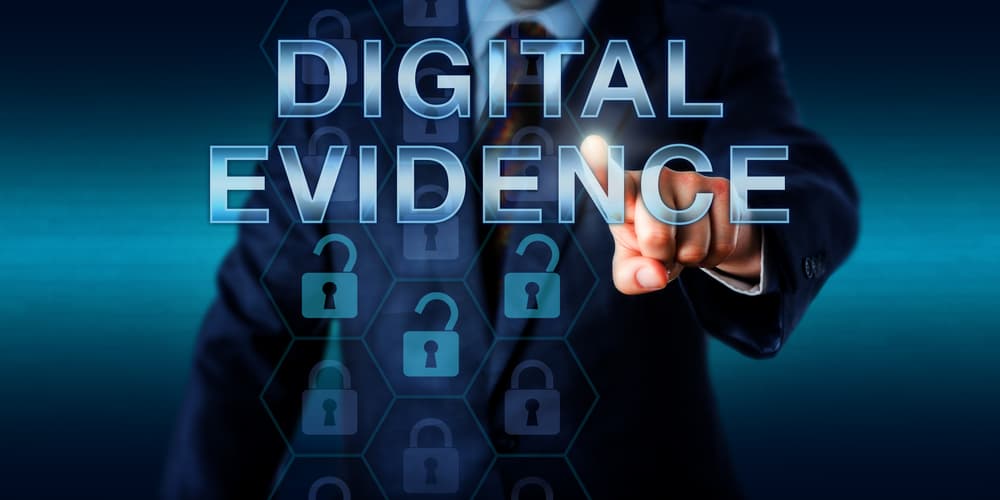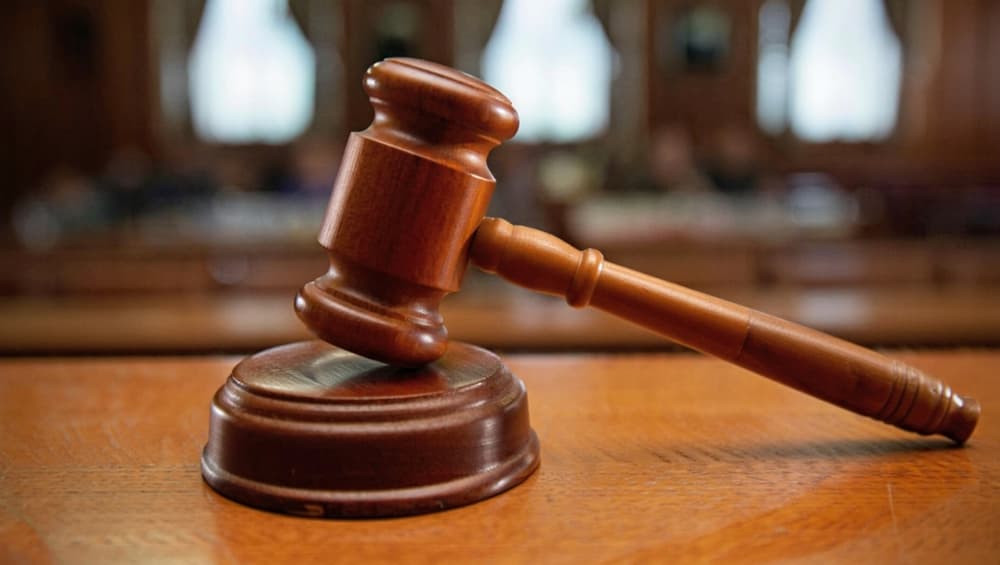In our hyper-connected world, we leave a digital trail with nearly every action we take. This constant stream of data from devices like your smartphone, Apple Watch, or Fitbit can be a powerful tool in a personal injury case. This information provides objective, measurable proof of how an accident has impacted your life by showing clear changes in your activity levels, sleep patterns, and daily routines.
However, this same data is a double-edged sword. Insurance companies are keenly aware of this digital goldmine and will diligently search for any piece of information—a social media post, a tagged photo, or GPS data—that they can twist to argue your injuries are not as severe as you claim. They will look for anything that suggests you are less injured or more active than you truly are.
The rules for collecting, preserving, and presenting this type of evidence are complicated and unforgiving. A single misstep potentially has serious consequences for your claim. This is not a task you should have to figure out while you are also trying to recover from a serious injury. Our personal injury lawyers handle the intricate details of gathering and using digital evidence, allowing you to focus completely on your healing and well-being.
If you've been injured, the digital evidence related to your case needs to be identified and protected immediately. Call Abels & Annes, P.C. now at (312) 924-7575 for a free and confidential consultation.
What Exactly Is Digital Evidence in a Personal Injury Context?
In simple terms, digital evidence is any information that is relevant to your case and is stored on or transmitted by an electronic device. Think of it as the digital breadcrumbs that create a map of your life before and after an injury.
The Sources Are Everywhere
This evidence is generated constantly by devices and platforms you use every single day. The list is extensive and continues to grow as technology evolves, but common sources include:
- Smartphones: Your phone is a treasure trove of data. Text messages, emails, photos with timestamps, videos, and GPS location data can all help to establish critical timelines, document your injuries and property damage, and verify your whereabouts at the time of the incident.
- Wearable Devices (Fitbit, Apple Watch, Garmin): These devices act like a black box for the human body. They record heart rate, sleep quality, daily step counts, and calories burned. This data can powerfully illustrate a stark decline in your health and activity levels following an accident.
- Social Media Accounts: Posts you make, comments you leave, events you check into, and photos you are tagged in on platforms like Facebook, Instagram, and X (formerly Twitter) create a public-facing diary of your life.
- Vehicle Event Data Recorders (EDRs): Often called a "black box," most modern cars are equipped with an EDR. This device records crucial data in the moments before, during, and after a crash, such as vehicle speed, braking activity, steering inputs, and the force of impact.
- External Sources: The digital trail extends beyond your personal devices. It can include security camera footage from nearby businesses, municipal traffic cameras, and even doorbell camera videos from private residences that may have captured the incident.
The Two Sides of the Digital Coin: Building vs. Breaking Your Claim
Your digital footprint can be your strongest ally or your most significant liability in a personal injury claim. The outcome hinges on having a legal team that understands how to strategically present the helpful information while vigorously defending you against the data that an insurance company will try to use against you.
How We Use Digital Evidence to Build Your Case
When handled correctly, digital data provides a powerful, unbiased narrative of your experience:

- Providing Objective Proof of Your Injuries: Your own words about your pain are important. But when we can back them up with hard data, the story becomes undeniable. A sudden and sustained drop in your daily step count from 10,000 to just 500 is powerful, objective proof of your immobility. Data showing consistently interrupted sleep patterns after an accident provide concrete support for a claim for pain and suffering.
- Creating a Clear "Before and After" Picture: By accessing months of your wearable device data from before the accident, we can establish a clear baseline of your typical health and fitness levels.
- Corroborating Your Account of Events: GPS data from your smartphone can place you at the scene of the accident at the exact time it occurred, refuting any attempts by the other party to change the facts. A timestamped photo or video from your phone can capture the immediate aftermath, the conditions of the scene, and your injuries in a way that words alone never can.
- Demonstrating the Full Scope of Your Damages: The impact of an injury extends far beyond physical pain. We can use emails to your employer about needing to take time off work, text messages with family and friends describing your struggles, and a digital calendar full of canceled plans and new medical appointments to paint a comprehensive picture of how the injury has disrupted every facet of your life.
How an Insurance Company Tries to Use Your Data Against You
The defense and their insurance company will leave no stone unturned in their search for evidence that minimizes their payout:
- The Social Media Trap: The defense will scrutinize your social media profiles. A single photo of you smiling at a family gathering could be presented to a jury as "proof" that you are not in as much pain as you claim, completely ignoring the fact that you were masking your discomfort for a few moments for the sake of your loved ones.
- Misinterpreting Your Activity: If your Fitbit shows you managed to walk to the end of your driveway to get the mail, an insurer might argue that you are physically capable and therefore not seriously injured. They will conveniently ignore the immense pain that small activity caused you or that you had to rest for hours afterward.
- Taking Communications Out of Context: A simple text message to a friend saying, "I'm feeling a bit better today," can be twisted by the defense to suggest you have made a full recovery. They will present this snippet devoid of the context that "better" might just mean your pain level dropped from a nine to an eight out of ten for a few hours.
- The Danger of Deletion: In the face of this scrutiny, you might be tempted to "clean up" your social media accounts or delete certain photos or text messages. Do not do this. Deleting potential evidence is known in legal terms as spoliation, and it can severely damage your credibility and your case. We can provide immediate guidance on the correct way to handle your digital accounts to protect your claim.
Why You Must Act Now: The Race to Preserve Evidence
After an injury, time is not on your side. While there are legal deadlines, the practical deadlines for gathering evidence are far more urgent.
The Deadlines That Matter Most Are Not the Legal Ones

Yes, Illinois has a strict legal deadline—the statute of limitations—for filing a personal injury lawsuit. It is short, and if you miss it, your right to pursue compensation is lost forever. However, the clock on collecting evidence starts ticking much faster.
The evidence needed to prove your case and secure fair compensation begins to disappear almost immediately. This is a race against time that you cannot afford to lose.
How Critical Evidence Vanishes
- Video Footage is Overwritten: Security cameras on businesses and traffic cameras operated by municipalities typically record on a loop. The video footage that captured your accident could be automatically and permanently deleted in a matter of days or, in some cases, weeks. Once it's gone, it's gone for good.
- Witnesses Disappear: An eyewitness can be the most powerful asset in your case. But people move, change their phone numbers, and their memories inevitably fade over time. A witness who can provide a clear, supportive account of what happened today might be impossible to track down in a few months.
- Digital Data Gets Lost: Technology moves fast. People replace their cell phones, deactivate old social media accounts, and vehicle data from an EDR can be erased or overwritten, especially if the vehicle is repaired or sold.
Securing the Evidence: A Step You Cannot Take Alone
You cannot be expected to track down all this evidence yourself while recovering from an injury. This is where we step in. One of the very first and most important actions we take is to send a "preservation of evidence" letter. This is a formal, legal demand sent to the at-fault party, their insurance company, and any other relevant entities, such as a trucking company or a business with security cameras.
This letter instructs them, under penalty of law, not to alter, delete, or destroy any information related to the incident. This covers everything from a truck driver's logs and vehicle maintenance records to video footage and electronic data from phones and computers. This immediately shields the evidence needed for your case, and it requires the authority of a law firm to be effective.
Our Process: How Your Personal Injury Lawyer Manages Digital Evidence for You

- Step 1: Comprehensive Evidence Identification: We begin by casting a wide net. Our team investigates every possible source of digital evidence, including many you may not have considered. We look beyond your own devices to third-party sources like traffic camera networks, cell tower data, and the electronic records of the at-fault parties.
- Step 2: Forensically Sound Collection: We ensure that all data is collected and preserved according to strict legal and forensic standards. This is vital to maintain the “chain of custody”, a legal concept that simply means we have an unbroken, documented record of the evidence from the moment it's collected to the moment it's presented in court. This process ensures the evidence is admissible and can be used to support your case.
- Step 3: Strategic Analysis: Data is just raw information until you turn it into a story. We meticulously analyze all the collected evidence to construct a powerful and clear narrative that demonstrates what happened and how your life has been affected. We also anticipate how the defense will try to attack the evidence and we prepare strong counter-arguments in advance.
- Step 4: Protecting Your Privacy: The legal process of discovery, where both sides exchange information and evidence, can feel invasive. The defense may try to ask for broad, sweeping access to your entire digital life. We aggressively fight to limit these requests to only what is directly relevant to your personal injury case, protecting your private information under laws like the Illinois Biometric Information Privacy Act (BIPA).
Frequently Asked Questions About Digital Evidence
Can the other side’s lawyers get access to my private social media posts?
Yes. During the discovery phase of a lawsuit, the defense can legally request access to your social media profiles, even if your privacy settings are set to "private." The courts have generally held that if information is relevant to the claims in a lawsuit, it is discoverable. We will work diligently to limit the scope of these requests to protect your privacy, but it is wisest to assume that anything you post online can and will be seen by the opposing party.
What if I was texting just before my car accident? Will that destroy my case?
Not necessarily. It is a fact that will need to be addressed head-on, but it does not automatically prevent you from recovering compensation, especially if the evidence clearly shows the other driver was primarily at fault for causing the collision. It is absolutely mandatory to be completely honest with us about all the facts from the very beginning. This allows us to prepare the best possible strategy to address this issue and minimize its impact on your case.
How does Illinois law specifically view evidence from a smartphone or wearable?
Illinois courts accept digital evidence, but it is not automatically admitted. The evidence must be properly authenticated under the Illinois Rules of Evidence. In simple terms, this means we have to prove to the court that the data is what we claim it is and that it has not been tampered with or altered in any way. This is a technical, procedural process that our firm is well-equipped to handle for you.
Should I stop using my wearable device or social media after an accident?
This is a strategic question that really depends on the specific facts and circumstances of your case. In some situations, continuing to use a wearable device generates powerful evidence of your limitations. In others, a social media post could be easily taken out of context. The best course of action is to speak with us immediately after an accident. We can provide you with clear, specific guidance on how to manage your digital presence in a way that protects your legal claim without forcing you to completely disconnect from your life.
Let Us Turn Your Data Into Your Advantage

Your digital life contains a detailed story. When properly gathered and presented, it is a story that can be used to prove the undeniable truth of what you have been through as a result of someone else's negligence. But this evidence is fragile, complex, and must be handled correctly from the very beginning.
Let our dedicated team at Abels & Annes, P.C. take on the burden of collecting, analyzing, and presenting this complex evidence. This allows you to set aside the stress of the legal process and focus on what truly matters: your health and your recovery.
Don't let your digital footprint be used against you. Call us today at (312) 924-7575 or contact us online to schedule a free, no-obligation consultation to discuss your case.
